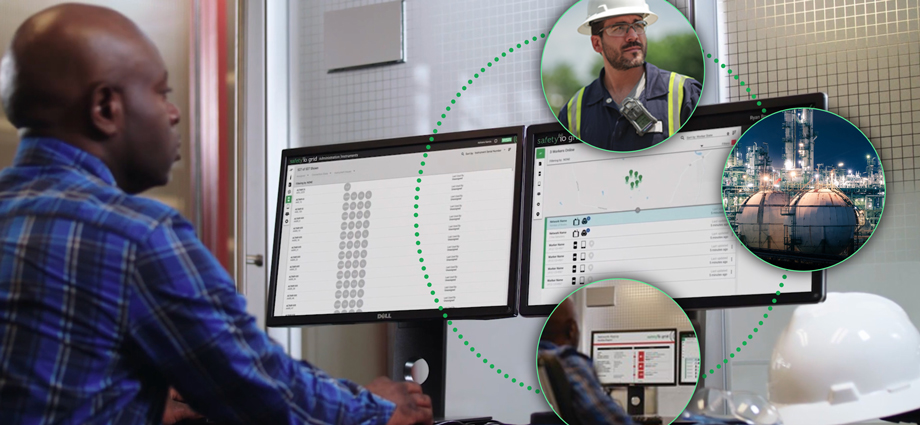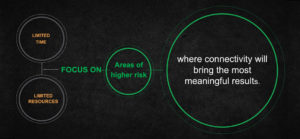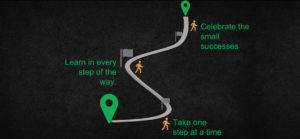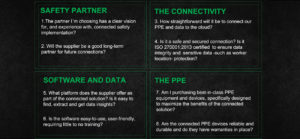
Industrial and safety leaders never faced so many challenges before. Such challenges include handling a diverse workforce (all of whom have different ways of working and communicating); contending with transitions, training, and turnovers; and managing disparate devices and data sources. In addition, there’s also the challenge of dealing with compliance issues for every aspect of the safety program, not to mention the personal protective equipment (PPE) itself. For safety professionals like you, the combination of these factors makes for a highly complex worker safety scenario.
Fortunately, that’s where a connected safety program can help. Of its many benefits, a connected safety program:
However, for some, creating a connected safety program from scratch can feel overwhelming or confusing. Where do you start? How do you figure out which steps to take? Most importantly, what can you do to avoid the pitfalls that can derail success?
While you could just jump off the proverbial cliff and let trial and error guide you, that would be time-consuming – not to mention costly. There’s good news, though: Even though connected safety can be challenging, it is key to transform your workplace safety program.
So, here are three essential tips for starting a successful connected safety program:
1.Prioritize
In the day-to-day, safety professionals like you are constantly setting and shifting priorities to the areas that have the highest risk. The same goes for the connectivity journey. Identify the areas facing the highest risks, then start your journey there.

Key Takeaway: For the most meaningful results, focus on areas with the highest safety risks.
2.Look at Connectivity as a Journey
Beginning a connected safety program is a smart and strategic decision. It does, however, take time to incorporate connectivity into the ebb and flow of your safety program and processes. Remember, connectivity is more than a tool or a product, it’s a new way of thinking just as much as it is an innovative methodology to help your safety program realize its full potential.
As such, move forward deliberately and strategically. Know that taking small steps will get you where you want to go – and far more successfully than making a giant leap into a great unknown. Bonus tip: To help you stay the course, take the time to celebrate the little wins along your connectivity journey.

Key Takeaway: Embrace the fact that connectivity is a worthwhile journey that happens one step at a time. Remember that slow and steady wins the race.
3.Ask the Right Questions and Learn
Take some time to learn about the how and why of connectivity before jumping into investing in a connected solution. Of course, there’s no need to spend weeks and months becoming a scholar on the subject. A quick yet immersive deep dive into the topic should be enough to answer the questions you have right now, as well as point you toward new and important questions you’ll need answered as you move forward, step-by-step.
Use this question map as you start your exploration:

Key Takeaway 1: Be open to learning and deepening your understanding at every step.
Key Takeaway 2: Commit to seeking out a high-quality connected solution with a great cybersecurity level.
Conclusion
Everybody’s going to have an opinion about how you should implement connectivity; however, you are the only one who truly knows the particulars of your safety program and where you want connectivity to take it. Don’t let detractors or distractions interfere with your progress toward a successful connected safety program.
Enlisting in the support and expertise of others can make navigating the connected journey much easier and more successful. That’s why it’s crucial to find the right connectivity partner and ask the right questions.
At MSA we guide safety professionals towards a successful connected safety journey, starting by their gas detection program, so they can improve their safety, efficiency, and productivity in ways they didn’t know were possible.
START YOUR CONNECTED JOURNEY
Get in touch at https://gb.msasafety.com/msa-safetyio to learn more about connected safety.